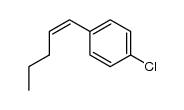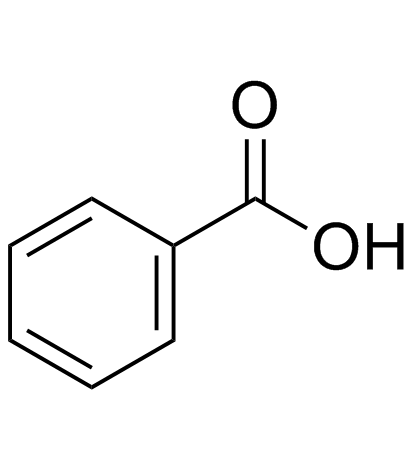Valerophenone

Valerophenone structure
|
Common Name | Valerophenone | ||
|---|---|---|---|---|
| CAS Number | 1009-14-9 | Molecular Weight | 162.22800 | |
| Density | 0.975 g/mL at 20 °C(lit.) | Boiling Point | 244-245 °C(lit.) | |
| Molecular Formula | C11H14O | Melting Point | -9 °C | |
| MSDS | Chinese USA | Flash Point | 217 °F | |
| Name | valerophenone |
|---|---|
| Synonym | More Synonyms |
| Density | 0.975 g/mL at 20 °C(lit.) |
|---|---|
| Boiling Point | 244-245 °C(lit.) |
| Melting Point | -9 °C |
| Molecular Formula | C11H14O |
| Molecular Weight | 162.22800 |
| Flash Point | 217 °F |
| Exact Mass | 162.10400 |
| PSA | 17.07000 |
| LogP | 3.05950 |
| Index of Refraction | n20/D 1.5143(lit.) |
| Stability | Stable. Flammable. Incompatible with strong oxidizing agents, acids, bases, plastics. |
Synonym:1-Phenyl-1-Pentanone Section 2 - COMPOSITION, INFORMATION ON INGREDIENTS
Risk Phrases: None Listed. Section 3 - HAZARDS IDENTIFICATION EMERGENCY OVERVIEW
The toxicological properties of this material have not been fully investigated. Potential Health Effects Eye: May cause eye irritation. Skin: May cause skin irritation. Ingestion: May cause irritation of the digestive tract. The toxicological properties of this substance have not been fully investigated. Inhalation: May cause respiratory tract irritation. The toxicological properties of this substance have not been fully investigated. Chronic: No information found. Section 4 - FIRST AID MEASURES Eyes: Flush eyes with plenty of water for at least 15 minutes, occasionally lifting the upper and lower eyelids. Get medical aid. Skin: Get medical aid. Flush skin with plenty of water for at least 15 minutes while removing contaminated clothing and shoes. Wash clothing before reuse. Ingestion: Never give anything by mouth to an unconscious person. Get medical aid. Do NOT induce vomiting. If conscious and alert, rinse mouth and drink 2-4 cupfuls of milk or water. Inhalation: Remove from exposure and move to fresh air immediately. If not breathing, give artificial respiration. If breathing is difficult, give oxygen. Get medical aid. Notes to Physician: Section 5 - FIRE FIGHTING MEASURES General Information: As in any fire, wear a self-contained breathing apparatus in pressure-demand, MSHA/NIOSH (approved or equivalent), and full protective gear. During a fire, irritating and highly toxic gases may be generated by thermal decomposition or combustion. Vapors may be heavier than air. They can spread along the ground and collect in low or confined areas. Runoff from fire control or dilution water may cause pollution. Extinguishing Media: In case of fire, use water, dry chemical, chemical foam, or alcohol-resistant foam. Use agent most appropriate to extinguish fire. Section 6 - ACCIDENTAL RELEASE MEASURES General Information: Use proper personal protective equipment as indicated in Section 8. Spills/Leaks: Absorb spill with inert material (e.g. vermiculite, sand or earth), then place in suitable container. Avoid runoff into storm sewers and ditches which lead to waterways. Clean up spills immediately, observing precautions in the Protective Equipment section. Provide ventilation. Section 7 - HANDLING and STORAGE Handling: Wash thoroughly after handling. Remove contaminated clothing and wash before reuse. Use with adequate ventilation. Avoid contact with eyes, skin, and clothing. Keep container tightly closed. Avoid ingestion and inhalation. Storage: Keep container closed when not in use. Store in a tightly closed container. Store in a cool, dry, well-ventilated area away from incompatible substances. Section 8 - EXPOSURE CONTROLS, PERSONAL PROTECTION Engineering Controls: Facilities storing or utilizing this material should be equipped with an eyewash facility and a safety shower. Use adequate ventilation to keep airborne concentrations low. Exposure Limits CAS# 1009-14-9: Personal Protective Equipment Eyes: Wear appropriate protective eyeglasses or chemical safety goggles as described by OSHA's eye and face protection regulations in 29 CFR 1910.133 or European Standard EN166. Skin: Wear appropriate protective gloves to prevent skin exposure. Clothing: Wear appropriate protective clothing to minimize contact with skin. Respirators: Follow the OSHA respirator regulations found in 29 CFR 1910.134 or European Standard EN 149. Use a NIOSH/MSHA or European Standard EN 149 approved respirator if exposure limits are exceeded or if irritation or other symptoms are experienced. Section 9 - PHYSICAL AND CHEMICAL PROPERTIES Physical State: Liquid Color: clear light yellow Odor: None reported. pH: Not available. Vapor Pressure: Not available. Viscosity: Not available. Boiling Point: 105 - 107 deg C @ 5.00mmHg Freezing/Melting Point: -9 deg C Autoignition Temperature: Not applicable. Flash Point: 102 deg C ( 215.60 deg F) Explosion Limits, lower: Not available. Explosion Limits, upper: Not available. Decomposition Temperature: Solubility in water: Specific Gravity/Density: .9880g/cm3 Molecular Formula: C11H14O Molecular Weight: 162.23 Section 10 - STABILITY AND REACTIVITY Chemical Stability: Stable under normal temperatures and pressures. Conditions to Avoid: Incompatible materials, excess heat, strong oxidants. Incompatibilities with Other Materials: Acids, bases, oxidizing agents, plastics. Hazardous Decomposition Products: Carbon monoxide, irritating and toxic fumes and gases, carbon dioxide. Hazardous Polymerization: Has not been reported. Section 11 - TOXICOLOGICAL INFORMATION RTECS#: CAS# 1009-14-9 unlisted. LD50/LC50: Not available. Carcinogenicity: Valerophenone - Not listed by ACGIH, IARC, or NTP. Section 12 - ECOLOGICAL INFORMATION Section 13 - DISPOSAL CONSIDERATIONS Dispose of in a manner consistent with federal, state, and local regulations. Section 14 - TRANSPORT INFORMATION IATA Not regulated as a hazardous material. IMO Not regulated as a hazardous material. RID/ADR Not regulated as a hazardous material. Section 15 - REGULATORY INFORMATION European/International Regulations European Labeling in Accordance with EC Directives Hazard Symbols: Not available. Risk Phrases: Safety Phrases: S 24/25 Avoid contact with skin and eyes. WGK (Water Danger/Protection) CAS# 1009-14-9: No information available. Canada CAS# 1009-14-9 is listed on Canada's DSL List. CAS# 1009-14-9 is not listed on Canada's Ingredient Disclosure List. US FEDERAL TSCA CAS# 1009-14-9 is listed on the TSCA inventory. SECTION 16 - ADDITIONAL INFORMATION N/A |
| Personal Protective Equipment | Eyeshields;Gloves;half-mask respirator (US);multi-purpose combination respirator cartridge (US) |
|---|---|
| Hazard Codes | Xi |
| Risk Phrases | R36/37/38 |
| Safety Phrases | S22-S24/25 |
| RIDADR | NONH for all modes of transport |
| WGK Germany | 3 |
| HS Code | 2914399090 |
| Precursor 0 | |
|---|---|
| DownStream 3 | |
| HS Code | 2914399090 |
|---|---|
| Summary | 2914399090. other aromatic ketones without other oxygen function. VAT:17.0%. Tax rebate rate:13.0%. . MFN tariff:5.5%. General tariff:30.0% |
|
Repetitive injection method: a tool for investigation of injection zone formation and its compression in microfluidic liquid chromatography.
J. Chromatogr. A. 1381 , 110-7, (2015) Sample introduction in microfluidic liquid chromatography often generates wide zones rather than peaks, especially when a large sample volume (relative to column volume) is injected. Formation of wide... |
|
|
Wide injection zone compression in gradient reversed-phase liquid chromatography.
J. Chromatogr. A. 1390 , 86-94, (2015) Chromatographic zone broadening is a common issue in microfluidic chromatography, where the sample volume introduced on column often exceeds the column void volume. To better understand the propagatio... |
|
|
Efficiency of short, small-diameter columns for reversed-phase liquid chromatography under practical operating conditions.
J. Chromatogr. A. 1383 , 47-57, (2015) Prototype small-size (1.0mm I.D., 5cm long) columns for reversed-phase HPLC were evaluated in relation to instrument requirements. The performance of three types of columns, monolithic silica and part... |
| MFCD00009480 |
| Pentanophenone |
| Butyl Phenyl Ketone |
| EINECS 213-767-3 |
| Valerophenone |
| 1-Phenylpentan-1-one |
 CAS#:14670-41-8
CAS#:14670-41-8 CAS#:2272-57-3
CAS#:2272-57-3 CAS#:65-85-0
CAS#:65-85-0
